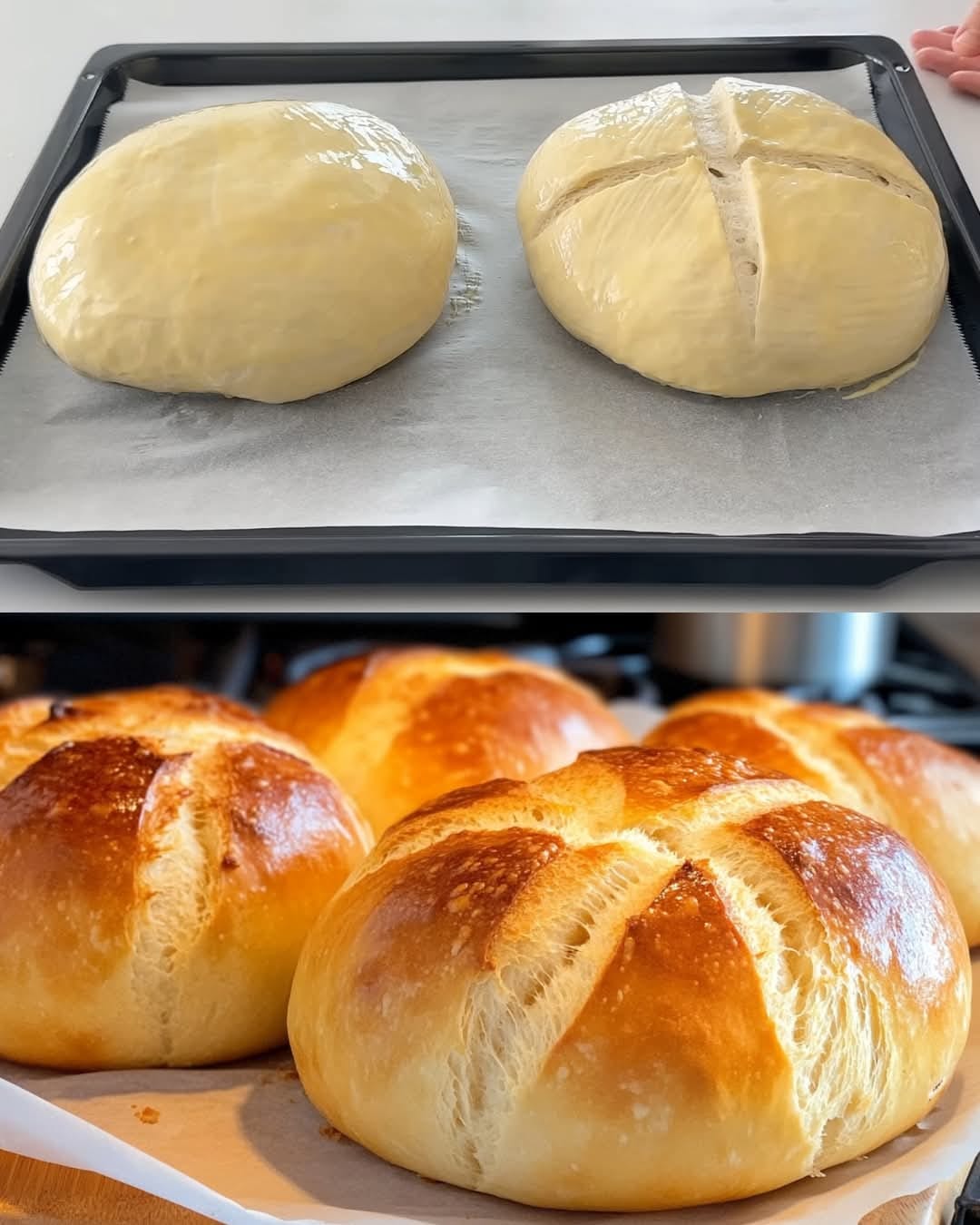Homemade Bread
Ingredients (Makes 2 loaves)
- 1 1/2 cups (360 ml) warm water (about 110°F/45°C)
- 2 tablespoons (25 g) sugar
- 1 tablespoon (9 g) active dry yeast
- 4 cups (500 g) all-purpose flour
- 1 1/2 teaspoons (9 g) salt
- 2 tablespoons (30 ml) olive oil or melted butter
Directions
- Activate the Yeast
- In a large mixing bowl, combine warm water, sugar, and yeast. Stir gently and let sit for 5-10 minutes until frothy.

- Combine Ingredients
- Add olive oil, salt, and 2 cups of flour to the yeast mixture. Stir until combined. Gradually add the remaining flour, 1/2 cup at a time, until a soft dough forms.
- Activate the Yeast
- Knead the Dough
- Transfer the dough to a floured surface and knead for about 8-10 minutes until smooth and elastic.
- First Rise
- Place the dough in a greased bowl, cover with a damp cloth, and let it rise in a warm place for about 1 hour, or until it doubles in size.
- Shape the Dough
- Punch down the dough to release air. Divide it into two equal portions. Shape each portion into a loaf and place them in greased loaf pans or shape them into rounds on a baking sheet.
- Knead the Dough
- Second Rise
- Cover the loaves and let them rise again for 30-40 minutes until doubled in size.
- Bake
- Preheat your oven to 375°F (190°C). Bake the loaves for 25-30 minutes, or until golden brown and they sound hollow when tapped on the bottom.
- Cool and Serve
- Remove the loaves from the pans and cool on a wire rack before slicing.
- Second Rise
Serving Suggestions
- Spread with butter or jam for breakfast.
- Pair with soups or stews for a hearty meal.
- Use for sandwiches or paninis.
- Serve with olive oil and balsamic vinegar as a dip.
- Toast and top with avocado or poached eggs.
Cooking Tips
- Ensure the water is warm, not hot, to properly activate the yeast.
- Knead thoroughly to develop gluten, which gives the bread structure.
- Use bread flour for a chewier texture, though all-purpose flour works well too.
- Add mix-ins like seeds, herbs, or garlic for extra flavor.
- Brush the tops with melted butter after baking for a soft crust.
Nutritional Benefits
- Provides carbohydrates for energy.
- Lower sodium than store-bought bread.
- Customizable with whole grains or seeds for added fiber and nutrients.
Dietary Information
- Vegetarian
- Can be made vegan by substituting butter with oil.
Nutritional Facts (Per Slice, Approx.)
- Calories: 120
- Protein: 3g
- Fat: 2g
- Carbohydrates: 22g

